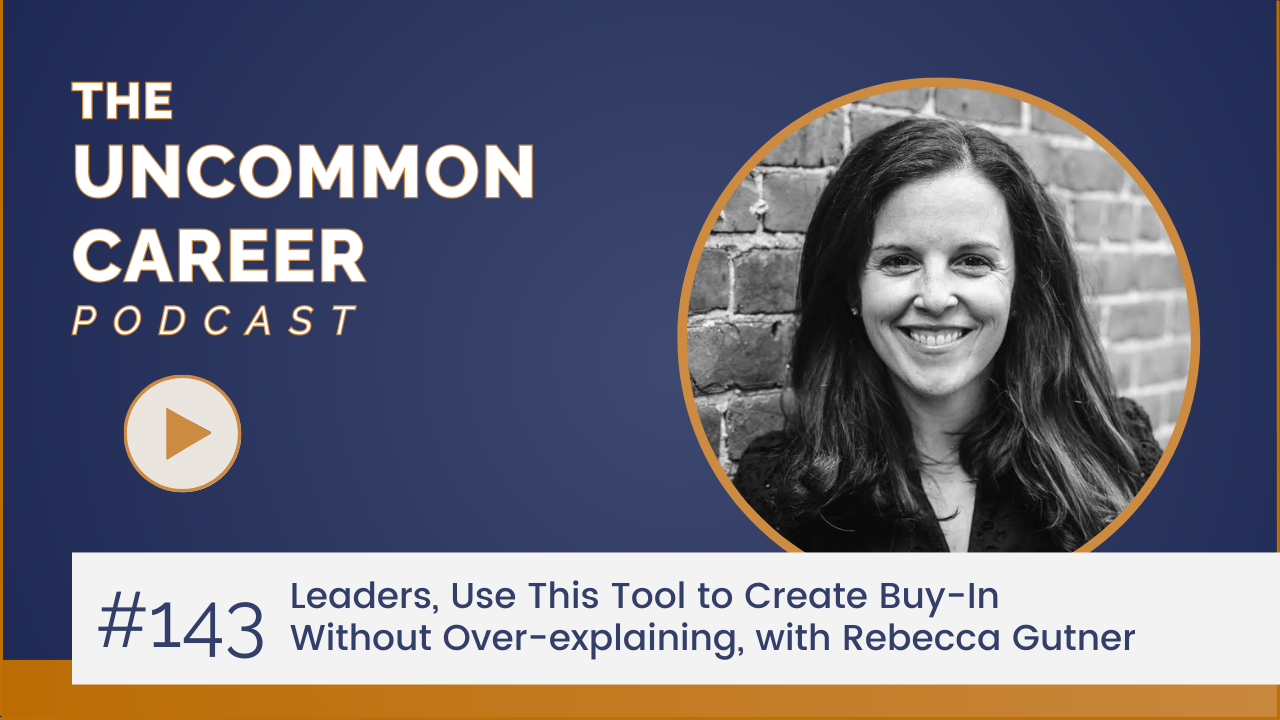124. Career Doubt Detox: Clearing Mental Clutter before Your Big Leap
Aug 12, 2025
Ditch the Mental Clutter and Take the Leap
You’ve made the decision. The career move, the leap, the goal—it’s set. It’s right there. So why does the motivation seem to vanish the moment action is required? Why does sitting down to work on that resume, submit that application, or prep for that big interview feel heavy, even paralyzing?
That internal resistance isn’t laziness. It’s not a lack of clarity. It’s a little thing called cognitive dissonance at work, a quiet but powerful tug-of-war happening in the background. Dive into how to recognize it, navigate it, and most importantly, flip the switch from stuck to strategic.
|
Listen on your favorite podcast app: |
| |
What Is Cognitive Dissonance and Why It Matters in Career Decisions
Cognitive dissonance is the mental discomfort that comes from holding two conflicting beliefs or actions. It’s what creates hesitation, procrastination, or second-guessing when what’s valued doesn’t match what’s being done.
Here’s what it often looks like in a career context:
-
Value: Growth and impact
-
Belief: The current job is stagnant and draining
-
Action: Staying put, even though it’s no longer aligned
That misalignment creates tension. And the brain—wired to keep things comfortable—tries to resolve the discomfort. But not always in helpful ways. Instead of motivating action, it often:
-
Changes the belief (“Maybe this job isn’t that bad”)
-
Justifies the inaction (“I really need the benefits right now”)
-
Avoids the discomfort altogether (“Let’s just wait it out”)
Without noticing, the goal starts to fade—not because it’s no longer important, but because the brain has convinced itself that staying still is safer than stepping out.
Three Ways the Brain Quietly Sabotages Momentum
Most people don’t even realize this process is happening.
But spotting the signs is the first step in changing the pattern.
Watch for:
-
Negotiating away the decision: Second-guessing what was once a clear goal
-
Minimizing the issue: Telling yourself, “It’s not that bad”
-
Procrastinating action: Avoiding the next step even when the outcome is deeply desired
Each of these is a signal that the brain is operating on autopilot, prioritizing short-term comfort over long-term growth.
How to Interrupt the Cycle and Take Back Control
This isn’t about shaming hesitation.
It’s about taking the wheel back from the brain’s autopilot and making an intentional, values-aligned decision.
Start by recognizing that the brain often chooses what’s easiest—not what’s best. It doesn’t aim for growth. It aims for efficiency. So instead of waiting for motivation to magically appear, switch gears with a few intentional steps:
1. Accept That Fear and Desire Coexist
Big dreams come with big stakes. Feeling both excitement and hesitation is normal.
-
Wanting something doesn’t mean fear is gone.
-
Fear doesn’t mean the goal is wrong.
Both can exist together. Growth lives in the tension between them.
2. Shift From Avoidance to Action-Oriented Thought
Instead of letting the brain justify staying stuck, refocus it on small, forward motion:
-
“What’s one thing I can do today to move closer to that goal?”
-
“Where can I start, even if I don’t feel ready?”
Forward action doesn’t require full confidence—it just requires clarity of intent.
3. Move Toward Desire, Not Just Away From Discomfort
Many start a job search to escape a toxic environment. That’s valid. But staying in that mindset drains energy and creates burnout.
A better approach is to orient around what’s truly desired:
-
What kind of work feels exciting?
-
What kind of leadership or culture is aligned?
-
What would feel fulfilling—not just tolerable?
That shift builds energy and momentum, turning the process from survival to strategy.
A Real Example: Shrinking Back When the Goal Is Clear
Imagine someone ready for a next-level promotion. The belief is, “I’m ready for more.” The value is growth. But the fear of rejection or failure causes hesitation.
The brain’s autopilot kicks in:
-
“Maybe it’s not the right time.”
-
“It would take too much effort.”
-
“What’s meant to be will come to me eventually.”
Sound familiar?
The shift comes from replacing automatic thought with intentional truth:
“This will take effort, yes. And it might feel scary. But that’s the cost of meaningful growth—and I’ve already decided it’s worth it.”
From there, even one action—rewriting a LinkedIn headline, reaching out to a contact, applying for a stretch role—begins to rewire the response system.
The Power of Awareness + Daily Practice
Flipping the switch isn’t a one-time moment.
It’s a practice—something done deliberately, again and again.
Use the following steps:
-
Objectify the situation: What belief and action were at play?
-
Notice the dissonance: Where was there a gap?
-
Interrupt the pattern: Decide how to respond differently next time.
-
Reinforce new actions daily: Small steps, taken consistently, build new momentum.
This creates a new pattern: one built on intention, not instinct.
When to Know You’re On Autopilot
Here’s how to know the brain is trying to protect through avoidance:
-
Repeating excuses or rationalizations
-
Justifying old patterns that no longer serve
-
Downplaying what was once a non-negotiable
-
Constantly saying “not now” without a clear reason
These aren’t red flags—they’re signposts.
They mean it’s time to pause, realign, and take one small action in the direction that matters most.
A Shift Worth Making
Doubt isn’t the enemy. Neither is fear.
The real threat is staying stuck in patterns that silence desire in the name of comfort.
The invitation here is simple but powerful:
-
Pause.
-
Pay attention to the mental clutter.
-
Choose alignment over ease.
Because the goal isn’t to stay safe—it’s to move forward.
And once the mental clutter clears, the path becomes a whole lot easier to walk.













